Can You Spray Milk Paint?
Powdered milk paint creates an old-world, chippy farmhouse painted finish. But it might be overwhelming to use for the first time. Here are some tips and tricks for painting furniture with milk paint, and we’ll answer the popular question, “Can you spray milk paint?”
Spray painting is one of the painting techniques for furniture that can give you a professional-looking finish. Let’s check out how we can do this for milk paint.
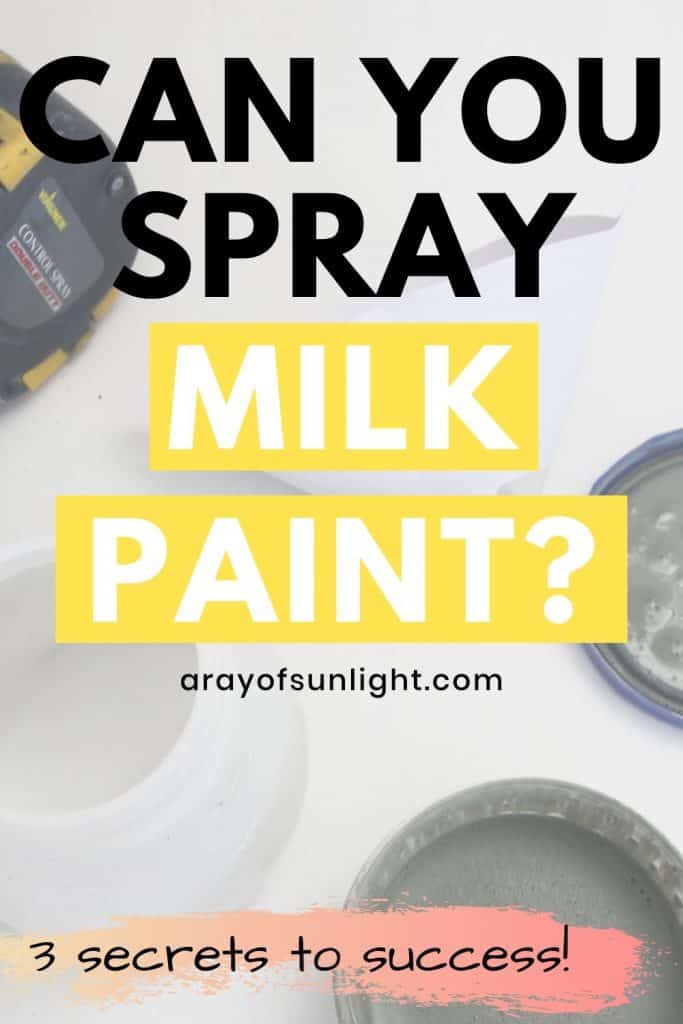
Spray painting your furniture can save you time and effort compared to using a brush. With spray paint, you can easily cover large surfaces in no time. Plus, it’s less physically demanding than traditional painting methods.
Another great thing about spray painting furniture is that it reduces the risk of brush strokes or uneven coverage. You can get a smooth and flawless finish with just a few coats of spray paint.
On top of that, spray painting allows you to create a more even and consistent look across all parts of your furniture. This is especially useful for intricate or detailed pieces. So if you want a pro finish without the hassle, spray painting is the way to go!
And this brings us back to the question…
As an Amazon Associate, I earn from qualifying purchases. I also may earn from other qualifying purchases with other companies or get free product to review and use. All opinions are my own.
Can You Spray Milk Paint?
If you love the look that powdered milk paint creates on old furniture, and you love using a paint sprayer for painting, you’re in luck! You CAN spray milk paint from a paint sprayer or paint gun!
I love to spray paint furniture with my paint sprayers. No matter the type of paint (except for non waterbased products… I personally only spray waterbased products).
I’ve sprayed milk paint through both my cheap Wagner Double Duty sprayer and my professional-grade Fuji Q4 Paint Sprayer. Both handled the milk paint like a champ!
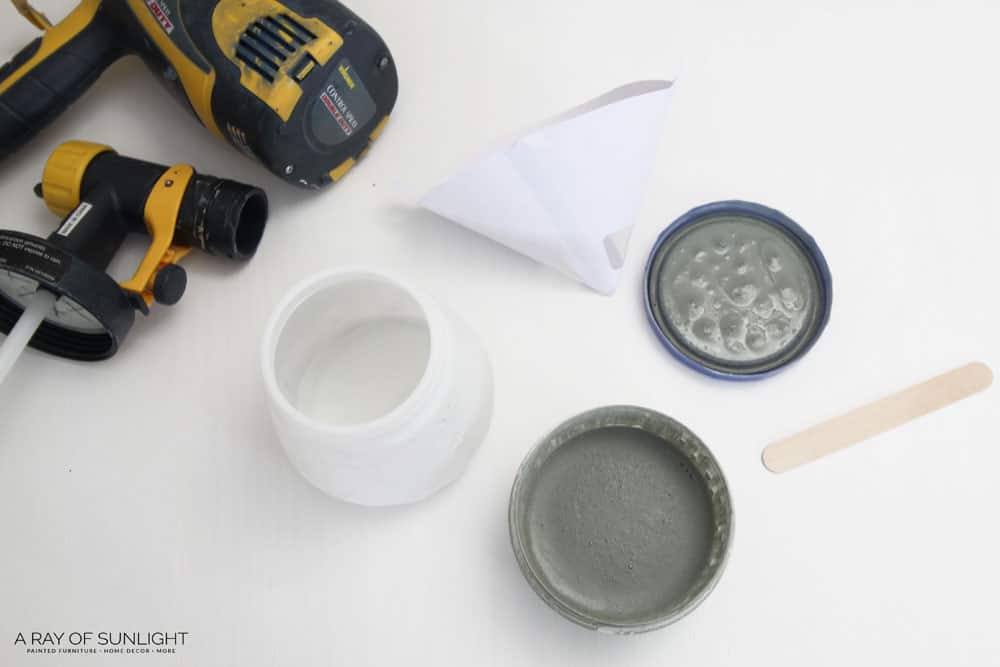
I’ve also sprayed Shackteau Interiors Milk Paint, Miss Mustard Seed Milk Paint, and The Real Milk Paint Co. with my paint sprayer with success!
(I haven’t tried any other brands, but from my experience, I can’t see why they wouldn’t work in a paint gun.)
Spraying Milk Paint
To make it a smooth process, there are a few things you should know about spraying milk paint.
Filter the Milk Paint
This is an absolutely necessary step when getting ready to spray milk paint. Yes, I always recommend filtering your paint before spraying it, but with milk paint, it’s even more important.
If you’ve used milk paint before, I’m sure you have noticed little clumps in your milk paint. These are little balls of powder that weren’t completely mixed in. No matter how hard I try to get all the little clumps mixed in, I never can get the paint completely clump free.
Learn how to mix milk paint like a professional here!
Why is Filtering Milk Paint So Important?
If you try putting paint with little (or big) clumps of paint through your paint sprayer, your sprayer will get clogged within 30 seconds or so.
The paint sprayer picks up the paint and clumps, and tries to fit it through tiny tubes and airways. When the clumps can’t fit through, your paint sprayer ends up only spraying air.
Then you have to take your paint sprayer apart, clean it up, get the clumps out of the tight spots, and start over. Basically it’s just a mess if you don’t filter. Trust me.
Instead, filter your mixed up milk paint before you put it in your paint sprayer.
How to Filter Paint for a Paint Sprayer
Easy! Just set one of these paint filters over your paint sprayer’s container.
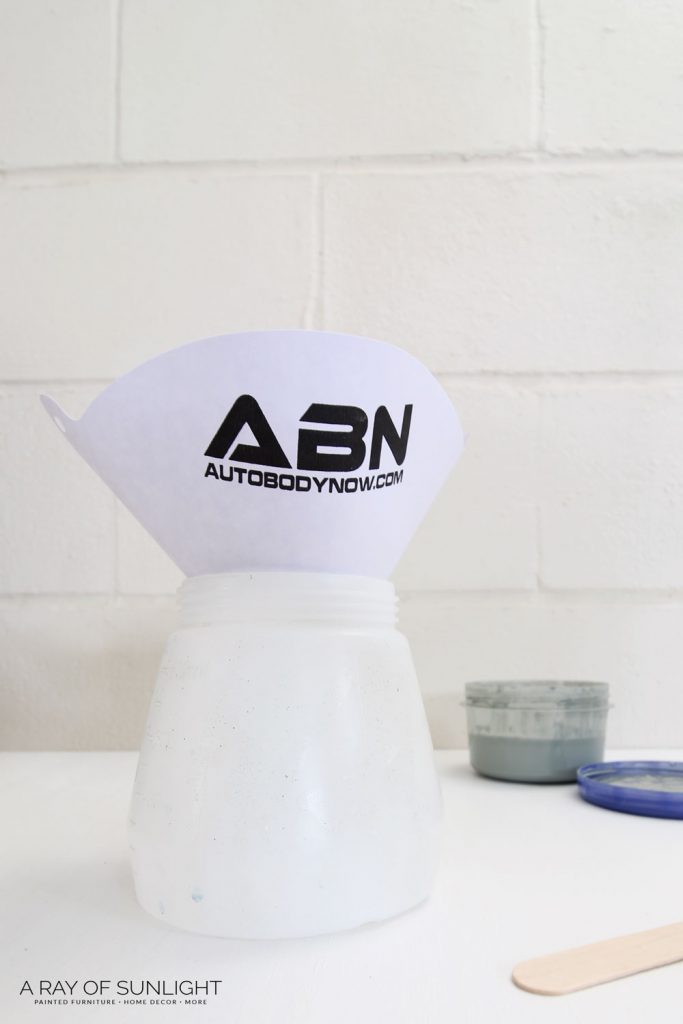

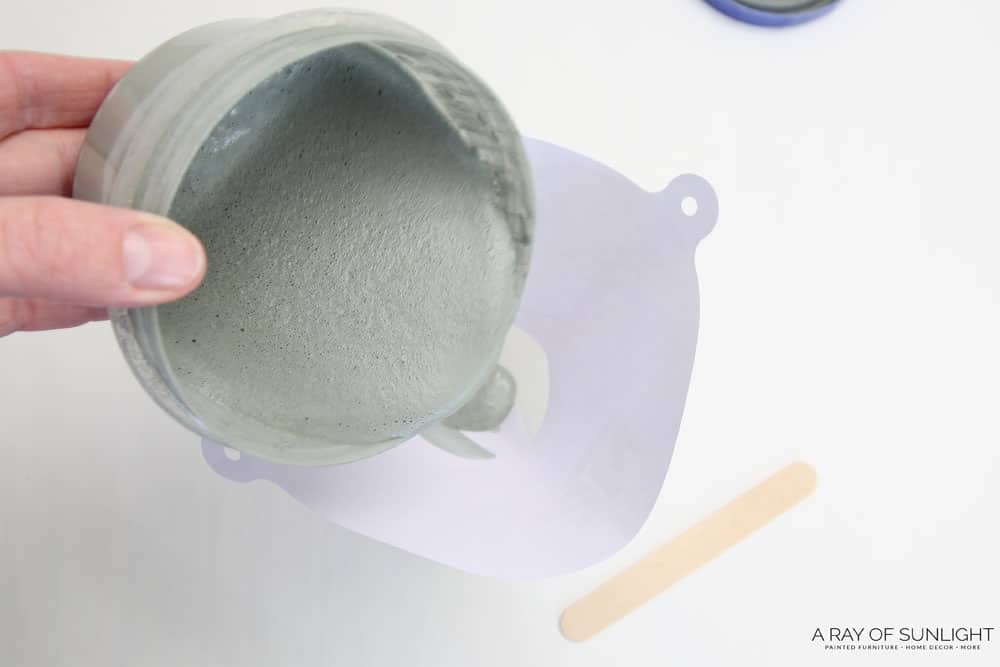
Then pour your milk paint into the filter and watch the strained paint fall into the paint sprayer’s container.
*The clumps of paint may block the paint from making it through the fine mesh. But you can use a stir stick or popsicle stick to mix the paint and unblock the mesh filter.

**Note: Filtering “The Real Milk Paint Company” milk paint is a little bit different than any milk paint I have used. It was super frothy after being mixed, and it took a long time for it to filter through the mesh filter. Just be patient, help it by stirring slowly, and it will eventually get through the filter. I did mix in a little more water to help it filter through. But don’t put too much water (Read more about that below).
Do I Need to Thin Milk Paint for the Paint Sprayer?
The short answer: It depends.
Since you mix milk paint on your own, your paint may be thinner or thicker than mine. You’re supposed to mix milk paint with a 1:1 ratio, so 1/2 cup of water and 1/2 of milk paint powder.
New to painting furniture with milk paint? Learn more about milk paint here! Or learn more with this emerald green dresser painted with The Real Milk Paint.
But let’s be honest, how well do we all really measure these things. I know I don’t measure exactly. Plus, in general, I like my paint to be a little thinner than you might like it.
“But Natalie, DO I NEED TO THIN PAINT FOR MY PAINT SPRAYER?”
You can do a little test to see if your paint is too thick! Once your paint is filtered, grab a viscosity cup. (My Wagner Double Duty paint sprayer came with its own viscosity cup.)
- Dunk the viscosity cup into the paint, fill it up all the way, and then let the paint start draining from the bottom.
- If the viscosity cup takes longer than 40 seconds to empty, then you need to add some more water to your paint.
- I like my paint to run out at around 35-40 seconds.
**Note: This is for the Wagner Double Duty Paint Sprayer’s viscosity cup. You may get different results with other sprayers/viscosity cups.
No worries though! Personally, I have never had a problem with my powdered milk paint being too thick to spray (I’ve definitely had issues if I didn’t filter the clumps out though!)
I usually have more issues with milk paint being too thin. I have some tips on how to work with really thin milk paint though!
How to Avoid Paint Drips with Really Thin Paint
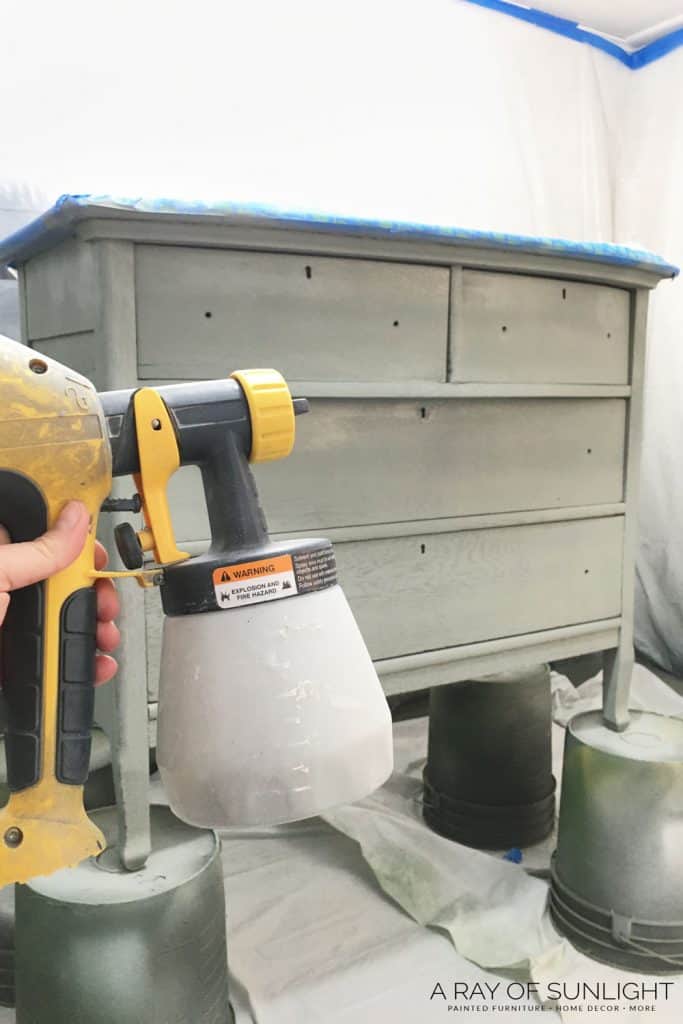
First, set your paint flow to low on your paint sprayer. Lighter, thinner coats will help avoid paint drips, especially when the paint is super thin.
IF you do find drips after you sprayed, don’t worry. Just grab a paintbrush and brush out the drips before the paint starts to dry.

Personally, I like to spray milk paint and then immediately walk around the piece of furniture, looking for paint drips or places where the paint look like it could start sagging.
IF you don’t catch the paint drips before the paint dries, you can always sand the paint drip out, but it will add extra time to your project, and possibly another coat of paint.
Where to Buy Milk Paint Powder
Here is a list of where you can find milk paint online:
- Shackteau Interiors Milk Paint
- Miss Mustard Seed Milk Paint
- Sweet Pickins Milk Paint
- Old Barn Milk Paint
- The Real Milk Paint
- Old Fashioned Milk Paint
If you’re looking for where to buy milk paint locally, you can search your paint of choice followed by “retailers” and you should find a list of local retailers.
Get the Secrets!
Grab this super convenient How to Repair Furniture Ebook with all of our secrets on how to repair furniture for only $14.
You can print it out and have instant access whenever you come across damaged furniture, and know exactly how to fix it!
Click on the picture of the book to purchase!
How to Seal Milk Painted Furniture
So you’ve finished spray painting your furniture with beautiful, smooth milk paint. But now comes the important step of sealing it to protect your hard work!
You have a few different options for sealing milk painted furniture: water-based polyurethane, hemp oil, and wax. Each one has its own pros and cons, so make sure to choose the best one for your project and preferences.
If you want the most durable finish, go with water-based polyurethane. It’s super easy to spray on with a paint sprayer and comes in different sheens.
Since you’re already using a sprayer for milk paint, you should apply the poly with it as well for an even finish. But if you’re going to use a brush, just keep in mind that it can create brush marks or foggy areas.
Another option is hemp oil, which is easy to apply and dries with a perfect even sheen without any brush strokes or haziness. However, it does take longer to dry and may require multiple coats.
Finally, wax can create a beautiful sheen and can even be tinted with paint colors for a unique look. However, it’s still not as durable as poly and requires more time to apply and buff out. Plus, wax has to be the final step, so you can’t paint over it unless you remove it completely. And if you’re using it on dark colors, every mark will show up.
So weigh your options and choose the right sealant for sealing painted furniture. Here’s how to seal milk paint for more details on using each method.
Learn all the things about painting with milk paint, including how to mix milk paint colors together, how to use milk paint, how to distress milk paint, how to seal milk paint, the secret to getting a chippy painted finish every time, and milk paint furniture makeovers!
Get tips and tricks on how to spray paint furniture here. (It’s focused on chalk paint, but the methods are the same.)
And last but not least, see the finished dresser here! (coming soon!) Happy painting!!
More Milk Paint Resources
- Milk Paint vs Chalk Paint
- DIY Cedar Chest Makeover with General Finishes Milk Paint
- Rust-oleum Milk Paint Review
- The End Table Makeover
- DIY Blue China Hutch
Follow us on YouTube to get more tips for painting furniture.
Or share your project with us on our Facebook Group and be part of our community. See you there!





